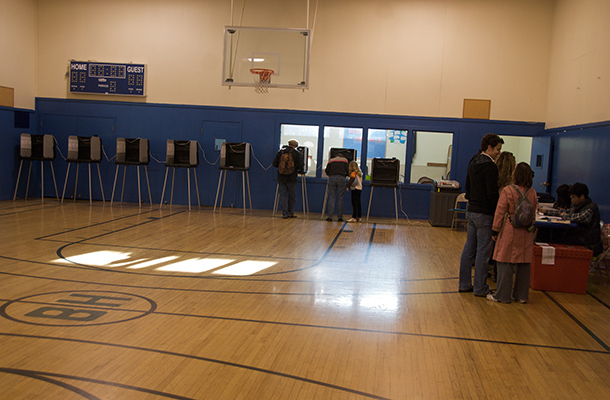
(Photo Credit: Steve Rhodes/Flickr)
Californians are concerned about the state’s abysmal voter turnout and seem ready to try to some different solutions to increase participation. The state experienced historically low turnout in both California’s June Primary and the November General Election in 2014, and Californians seem to have noticed.
The Public Policy Institute of California yesterday released survey results that show eight of 10 Californians say turnout is either a big problem (59 percent) or somewhat of a problem (25 percent). Only 13 percent say it’s not much of a problem.
For unregistered adults, one of the top reasons given for not registering to vote (other than citizenship status) is being too busy or not having enough time. For those who do register to vote but don’t always follow through and vote, lack of time was cited as the top reason (30 percent) in the survey.
The PPIC poll indicates Californians are ready to try some new approaches in order to spur voter participation.
When asked about a policy (already enacted in Oregon and under consideration in California) to automatically register eligible citizens when they visit the DMV, two in three adults (69 percent) and likely voters (67 percent) expressed support.
Support is similar for another idea aimed at making it easier to vote: automatically sending each registered voter a vote-by-mail ballot. Two in three adults (70 percent) and likely voters (66 percent) favor this idea. Support for both reforms is higher among Democrats than independents or Republicans.
More than six in 10 adult residents are in favor of both electoral reforms.
“It’s reassuring to know Californians recognize the need to increase voter participation numbers,” said Phillip Ung, director of public affairs for CA Fwd. “For California to work better, state leaders need to be responsive and representative, and voters must hold elected officials accountable for results. This requires transparency throughout the government so voters have an accurate understanding of public decisions and the results of public programs.”
CA Fwd has been involved for several years with collaborative effort to examine and address the unique challenges facing the state of California’s election system, called the Future of California Elections, which is working to modernize elections and expand participation.
Public trust of our federal and state governments is still rather low in the poll and solid majorities said they believe “a few big interests looking out for themselves” run those two levels of government. Both of these factors are often reasons people give for skipping participation in elections.
Job approval for the U.S. Congress is only at 27 percent among all adults and 20 percent among likely voters while 68 percent disapprove. Overall approval levels for Congress were similar in March of this year (24 percent adults, 16 percent likely voters) and in May 2014 (24 percent adults, 14 percent likely voters). Latinos (40 percent) are more likely than Asians (27 percent) to approve of Congress and much more likely than whites (19 percent) or blacks (18 percent) to approve. Approval levels decline as age and level of education increase.
When asked about state government, six in 10 Californians (61 percent) and likely voters (62 percent) think that they can trust the state government to do what is right only some of the time. An additional six percent of Californians and nine percent of likely voters volunteer that they can never trust the state government to do what is right.
But a big majority (73 percent), when given a short summary, said they think the Governor’s proposed budget plan is doing something right. And most Californians surveyed said they support using the projected budget surplus for paying down debt and building a reserve in the state budget, with 52 percent in favor, compared to 43 percent for those who want to restore some funding for social services programs.
This recent commentary by the two co-chairs of CA Fwd spoke about Governor Brown’s proposed spending plan and how they think it is a step in the right direction to smarter budgeting because of the priority it places on paying down debt, building up state reserves, and investing in the right things to help the state prosper and prepare for the next economic downturn.

